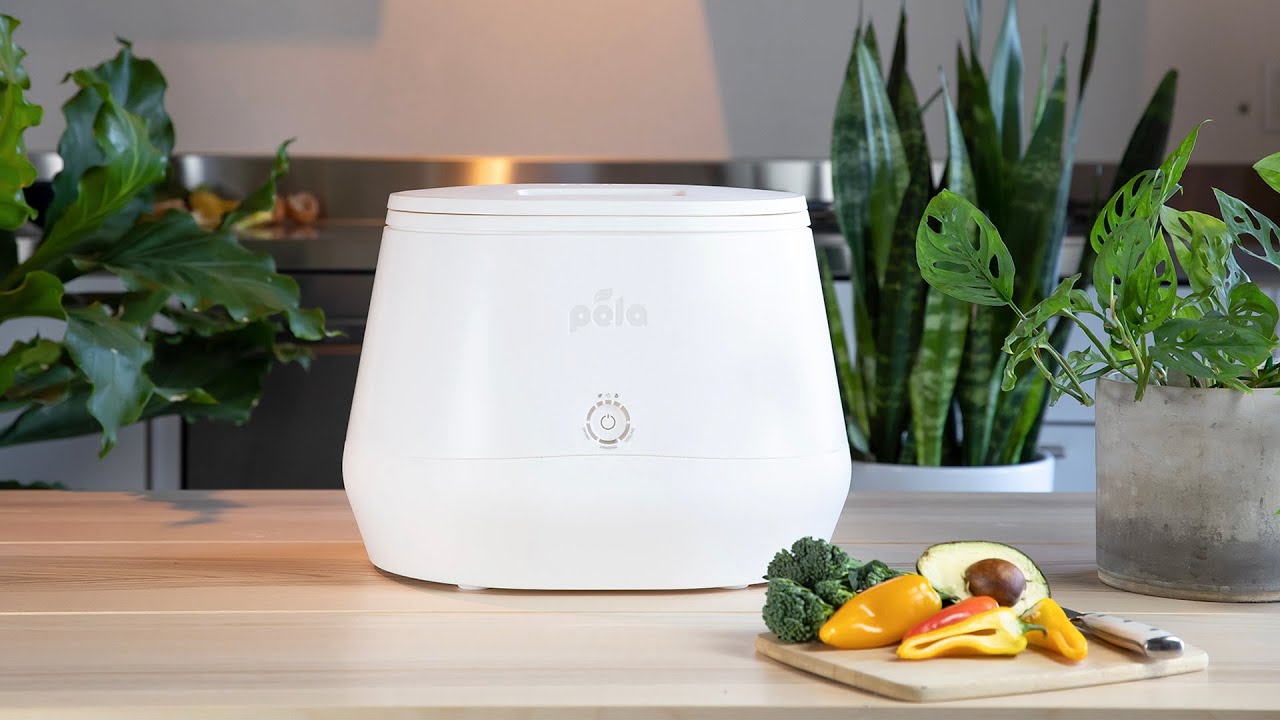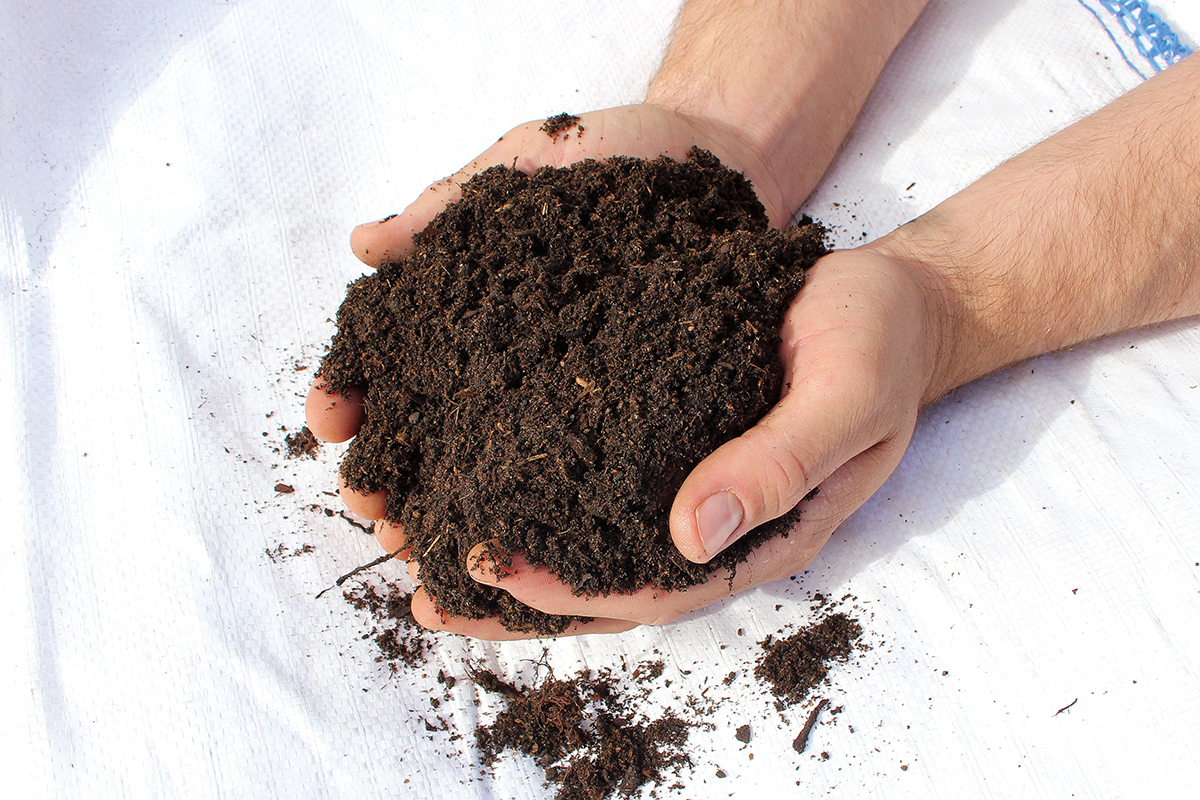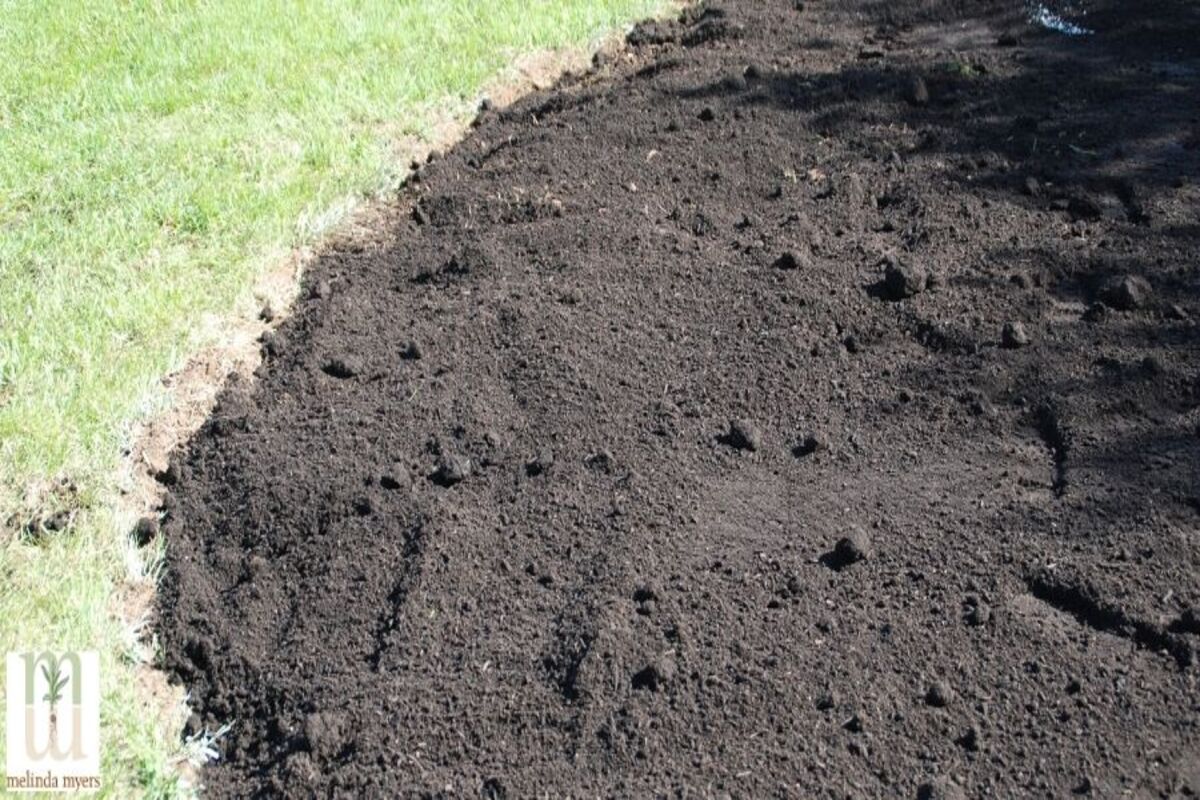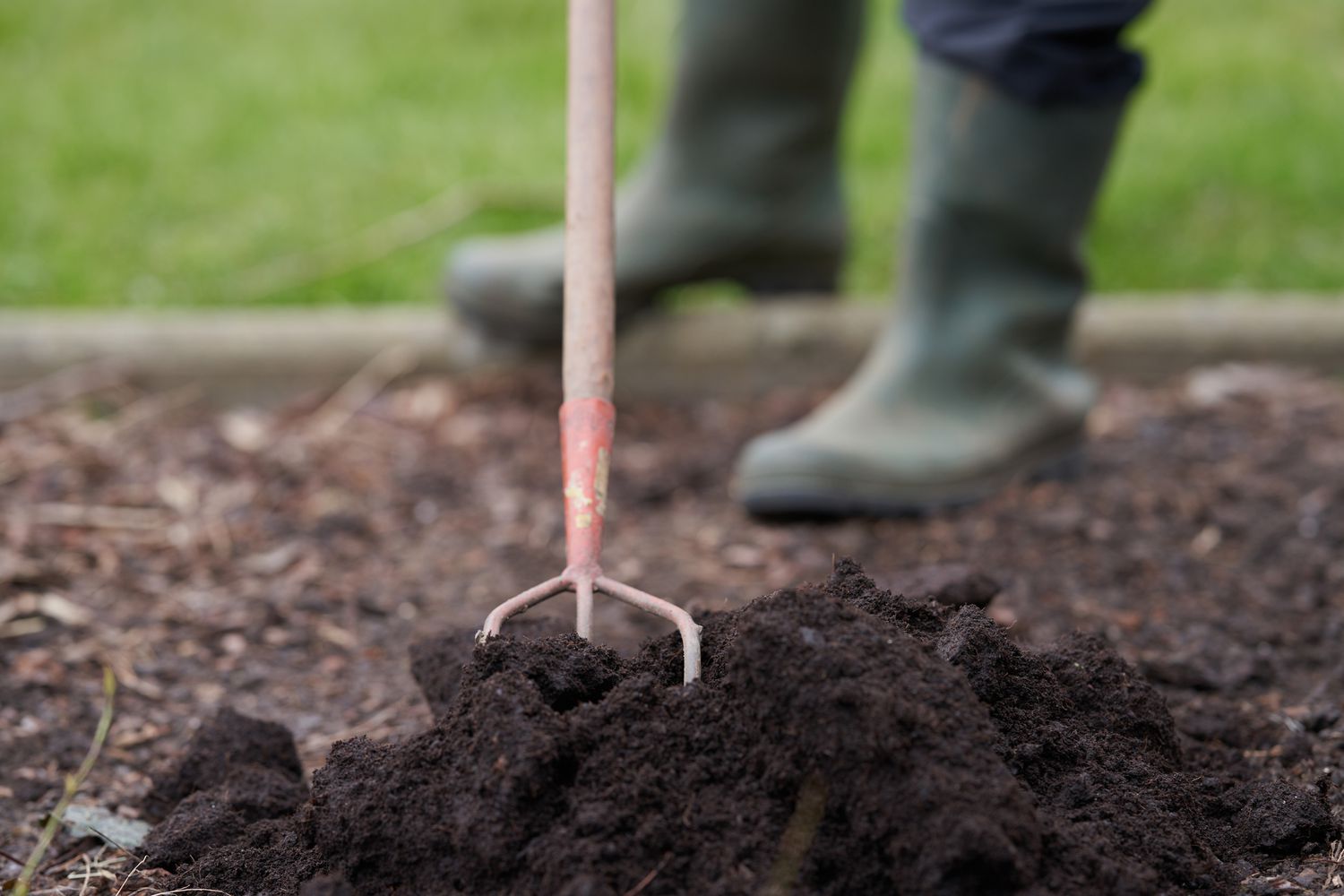Home>Gardening Tips and Tricks>Eco-Friendly Gardening>What Can Lomi Compost


Eco-Friendly Gardening
What Can Lomi Compost
Modified: February 9, 2024
Discover the benefits of Lomi Compost for eco-friendly gardening. Transform your garden into a sustainable oasis with this natural composting system.
(Many of the links in this article redirect to a specific reviewed product. Your purchase of these products through affiliate links helps to generate commission for Chicagolandgardening.com, at no extra cost. Learn more)
Table of Contents
Introduction
Welcome to the world of eco-friendly gardening! In today’s fast-paced world, people are becoming more conscious of the environmental impact of their actions. One way to contribute to a greener planet is through eco-friendly gardening practices, and one such practice is lomi composting.
Lomi composting, also known as hot composting or aerobic composting, is a method that utilizes natural decomposition processes to break down organic waste materials into nutrient-rich compost. Unlike traditional composting methods that require a longer time to decompose organic matter, lomi composting accelerates the process by creating ideal conditions for microorganisms to thrive.
But what exactly makes lomi composting so beneficial? The answer lies in its ability to significantly reduce waste, improve soil quality, and promote a healthier garden ecosystem. By understanding the benefits and process of lomi composting, you can take a step towards creating a more sustainable garden.
In this article, we will explore the benefits of lomi composting, the types of waste suitable for lomi composting, the lomi composting process, and how to use lomi compost in your gardening practices. So, get ready to delve into the fascinating world of eco-friendly gardening and discover the wonders of lomi composting!
Benefits of Lomi Compost
Lomi composting offers a myriad of benefits that make it an appealing choice for eco-friendly gardeners. Let’s explore some of the key advantages of incorporating lomi compost into your gardening practices:
- Improves Soil Quality: Lomi compost is a nutrient-rich amendment that enhances soil fertility, structure, and moisture-holding capacity. It provides essential nutrients, including nitrogen, phosphorus, and potassium, that are vital for the healthy growth of plants. By adding lomi compost to your garden beds or containers, you can create an ideal growing environment for your plants.
- Reduces Waste: Lomi composting allows you to divert organic waste from landfills, reducing the production of greenhouse gases. Kitchen scraps, yard trimmings, and other biodegradable materials can be recycled and transformed into valuable compost through the lomi composting process. This not only benefits the environment but also minimizes the need for chemical fertilizers.
- Encourages Beneficial Microorganisms: Lomi composting creates an ideal environment for beneficial microorganisms, such as bacteria and fungi, to thrive. These microorganisms break down organic matter and convert it into humus, a stable form of organic matter that improves soil structure and supports beneficial microbial activity. This, in turn, promotes a healthy soil ecosystem and enhances plant health.
- Enhances Water Retention: Lomi compost has excellent water-holding capacity, allowing it to retain moisture in the soil for longer periods. This is particularly beneficial in regions with limited water availability or during dry spells, as it reduces the need for frequent irrigation. Additionally, the improved soil structure resulting from lomi composting allows for better water infiltration and prevents soil erosion.
- Suppresses Diseases and Pests: The use of lomi compost in gardening has been found to suppress certain plant diseases and pests. The presence of beneficial microorganisms in the compost helps to build a strong defense mechanism in plants, making them more resistant to various diseases and pests. This leads to healthier plants and reduces the need for chemical pesticides.
These are just a few of the many benefits that lomi composting offers. By incorporating lomi compost into your gardening practices, you can create a sustainable and thriving garden while minimizing waste and nurturing a healthier environment.
Types of Waste Suitable for Lomi Composting
Lomi composting utilizes a wide range of organic materials to create nutrient-rich compost. Understanding which types of waste can be used will help you make the most of this eco-friendly gardening practice. Here are some common types of waste suitable for lomi composting:
- Kitchen Scraps: Fruit and vegetable peels, coffee grounds, tea leaves, eggshells, and leftover or spoiled produce make excellent additions to lomi compost. Avoid adding meat, dairy products, and oily or greasy materials, as they can attract pests or produce unpleasant odors.
- Yard Waste: Grass clippings, leaves, small twigs, and plant trimmings are all ideal for lomi composting. To ensure proper decomposition, shred or chop larger yard waste into smaller pieces before adding them to the compost pile.
- Plant-Based Materials: Dead flowers, pruned branches, and spent annuals can all be added to the lomi compost pile. However, avoid adding weeds that have gone to seed, as the seeds may survive the composting process and lead to weed problems in the garden.
- Straw or Hay: Straw or hay can be used in lomi composting to provide carbon-rich material and improve the compost’s structure. However, avoid using hay that contains weed seeds.
- Paper and Cardboard: Shredded newspaper, paper towels, and cardboard can all be used as carbon-rich additions to the lomi compost pile. Avoid using glossy or colored paper, as they may contain toxic chemicals.
- Wood Ash: Wood ash from fireplaces or wood-burning stoves can be added in small amounts to lomi compost. Wood ash is alkaline, so it’s important to monitor the pH of your compost and adjust accordingly.
- Manure: Well-aged livestock manure, such as cow, horse, or chicken manure, can be added to lomi compost. Ensure that the manure has been properly composted or aged, as fresh manure can be too strong and may contain harmful bacteria.
Remember to maintain a proper balance between carbon-rich (browns) and nitrogen-rich (greens) materials in your lomi compost pile. Aim for a ratio of around 3 parts browns to 1 part greens to ensure an optimal composting process.
By incorporating these types of waste into your lomi compost pile, you can turn what would have been discarded into valuable compost that nourishes your garden and reduces waste.
Lomi Composting Process
The process of lomi composting involves creating the ideal conditions for organic materials to break down into nutrient-rich compost. While there are slight variations in techniques, here is a general overview of the lomi composting process:
- Select a Compost Site: Choose a suitable location for your compost pile or bin. It should be well-drained and easily accessible for regular maintenance.
- Layer the Organic Materials: Begin by adding a layer of carbon-rich materials, or “browns,” such as shredded leaves, straw, or cardboard. Follow it with a layer of nitrogen-rich materials, or “greens,” such as kitchen scraps or grass clippings. Repeat this layering process, ensuring a good balance between browns and greens.
- Add Water: Moisten the compost pile as you build it, aiming for a moisture level similar to a wrung-out sponge. This helps create the ideal environment for decomposition.
- Turn the Compost: Every few weeks, use a pitchfork or compost turning tool to aerate the pile. This helps introduce oxygen to the microorganisms and speeds up the decomposition process.
- Maintain the Moisture Level: Regularly check the moisture level of the compost pile, adding water if it becomes too dry or turning it to help it dry out if it becomes too wet. Maintaining the right moisture balance is crucial for successful composting.
- Monitor the Temperature: Lomi composting generates heat as the organic materials decompose. Use a compost thermometer to monitor the temperature, aiming for a range of 120-160°F (49-71°C). This high temperature helps kill pathogens and weed seeds.
- Wait for the Compost to Mature: Depending on the composting conditions and the materials used, lomi compost can take anywhere from a few months to a year to fully mature. The compost is ready when it appears dark, crumbly, and has an earthy smell.
- Use the Compost: Once your lomi compost has matured, it is ready to be used in your garden. Incorporate it into the soil before planting, top dress existing plants, or use it as mulch to nourish your garden and improve soil fertility.
Remember to be patient with the composting process and make adjustments as needed to ensure optimal conditions for decomposition. With time and care, you will be rewarded with rich, nutrient-dense compost for your garden.
Vermicomposting vs. Lomi Composting
When it comes to composting, two popular methods that often come up in discussions are vermicomposting and lomi composting. Let’s take a closer look at the key differences between these two composting techniques:
Vermicomposting:
Vermicomposting is a method of composting that utilizes the activity of earthworms to break down organic materials. It involves creating a controlled environment for the worms to thrive and convert organic waste into nutrient-rich vermicompost. Here are some key points about vermicomposting:
- Worms: Earthworms, such as red wigglers or Eisenia fetida, are the stars of vermicomposting. These worms consume organic matter and excrete nutrient-rich castings, which serve as a valuable soil amendment.
- Container: Vermicomposting is typically done in a container, such as a worm bin. The bin provides a controlled environment for the worms and helps prevent pests and odor issues.
- Food Waste: Vermicomposting is particularly effective for processing kitchen scraps, such as fruit and vegetable peelings, coffee grounds, and tea bags. It is not recommended to add meat, dairy, oily/greasy foods, or large amounts of yard waste to vermicompost bins.
- Time: Vermicomposting is relatively quick compared to other composting methods. It can take anywhere from a few months to several months for the worms to process the organic materials into vermicompost.
- Benefits: Vermicompost, also known as worm castings, is a highly fertile and concentrated organic amendment. It improves soil structure, enhances plant growth and health, and increases water-holding capacity.
Lomi Composting:
Lomi composting, also known as hot composting, is a microbial-driven process that relies on bacteria and fungi to decompose organic materials. It involves creating the ideal conditions for rapid decomposition and the development of high-quality compost. Here’s what you need to know about lomi composting:
- Microorganisms: Lomi composting relies on naturally occurring bacteria and fungi to break down organic waste. These microorganisms require oxygen, moisture, and the right carbon-to-nitrogen ratio for efficient decomposition.
- Temperature: Lomi composting generates heat due to microbial activity, resulting in high temperatures ranging from 120-160°F (49-71°C). The heat helps kill weed seeds and pathogens, speeding up the decomposition process.
- Types of Waste: Lomi composting can handle a wider range of organic materials, including kitchen scraps, yard waste, plant trimmings, paper, cardboard, and manure. It can process a larger volume of waste compared to vermicomposting.
- Time: Lomi composting takes longer compared to vermicomposting. Depending on the conditions and materials used, it can take several months to a year for the organic matter to fully decompose into nutrient-rich compost.
- Benefits: Lomi compost is a valuable soil amendment that improves soil structure, enhances nutrient availability, increases water retention, and promotes beneficial microbial activity. It is suitable for a wide range of gardening applications.
Both vermicomposting and lomi composting have their unique advantages and uses. While vermicomposting is ideal for smaller-scale indoor composting and processing kitchen scraps, lomi composting is better suited for larger-scale outdoor composting and handling a wider variety of organic waste materials.
Ultimately, the choice between vermicomposting and lomi composting depends on your specific needs, available space, and the type of organic waste you have. Whichever method you choose, both offer sustainable and eco-friendly ways to reduce waste and enrich your garden soil.
Lomi Compost as Soil Amendment
Lomi compost is a highly valuable soil amendment that can greatly improve the quality and fertility of your garden soil. When properly incorporated, lomi compost provides numerous benefits that support plant growth and overall soil health. Here’s why lomi compost is an excellent choice as a soil amendment:
- Nutrient-Rich: Lomi compost is packed with essential nutrients that plants need for healthy growth. It contains a balanced combination of nitrogen, phosphorus, potassium, and other micronutrients. When added to soil, lomi compost replenishes these nutrients, ensuring that plants have access to a steady supply throughout their growth cycle.
- Improves Soil Structure: Lomi compost enhances soil structure by improving its overall texture and porosity. The organic matter in lomi compost helps to bind soil particles together, creating better soil aggregation. This results in improved drainage, aeration, and water-holding capacity, allowing plant roots to access water and nutrients more effectively.
- Promotes Microbial Activity: Lomi compost serves as a food source for beneficial soil microorganisms and encourages their growth and activity. These microorganisms, such as bacteria, fungi, and earthworms, play a vital role in the decomposition of organic matter and nutrient cycling. They break down complex organic compounds into simpler forms that are readily available for plant uptake, promoting soil fertility.
- Increases Water Retention: The organic matter in lomi compost has excellent water-holding capacity. It helps the soil retain moisture and prevents excessive water runoff, especially in sandy soils. This is particularly beneficial during drier periods, as it reduces the frequency of irrigation and conserves water resources.
- Buffers pH Levels: Lomi compost acts as a natural pH buffer, helping to maintain the ideal pH range for plant growth. It can raise pH levels in acidic soils or lower pH levels in alkaline soils, creating a more favorable environment for plants to thrive. Regular incorporation of lomi compost can help stabilize soil pH over time.
- Suppresses Soil Diseases: The addition of lomi compost to soil has been shown to suppress certain soil-borne diseases. The beneficial microorganisms present in the compost compete with harmful pathogens, reducing their population and preventing diseases from taking hold. This can significantly reduce the need for chemical pesticides in your garden.
To incorporate lomi compost into your soil, apply a layer of compost to the surface and gently work it into the top few inches of the soil. Alternatively, you can use lomi compost as a top dressing around established plants. Aim for a thickness of about 2-4 inches and avoid piling the compost directly against the plant stems or trunks.
Remember to regularly replenish the soil with lomi compost, as its nutrients gradually get utilized by plants and washed away by rainfall. By consistently adding lomi compost to your soil, you will create an environment that promotes healthy plant growth, improves soil quality, and supports a thriving garden ecosystem.
Using Lomi Compost in Gardening
Lomi compost is a versatile and valuable resource that can be utilized in various ways to maximize its benefits in your gardening practices. Whether you have a small plot, a container garden, or a larger landscape, here are some effective ways to use lomi compost in your gardening endeavors:
- Soil Amendment: Incorporate lomi compost into your soil before planting. Mix it thoroughly into the top few inches of the soil to improve its structure and fertility. This will provide a nutrient-rich foundation for your plants and encourage healthy root growth.
- Top Dressing: Apply a layer of lomi compost around the base of established plants. This technique, known as top dressing, helps to nourish the plants, suppress weeds, and conserve moisture in the soil. Avoid piling the compost directly against the stems or trunks of plants to prevent rot or disease.
- Potting Mix Enrichment: Enhance the quality of your potting mix by adding lomi compost. Mix it with the potting soil at a ratio of 1:1 or as recommended for your specific plants. The compost will provide essential nutrients, improve water retention, and foster beneficial microbial activity in container gardens.
- Mulching: Use lomi compost as mulch around plants to help retain soil moisture, suppress weeds, and regulate soil temperature. Spread a layer of compost around the plants, leaving space around the stem or trunk to prevent rot. Replenish the mulch layer as needed to maintain a thickness of 2-4 inches.
- Compost Tea: Extract the nutrient-rich liquid from lomi compost by making compost tea. Simply place a handful of compost in a container filled with water and let it steep for a few days. Strain the liquid and use it as a foliar spray or soil drench to provide a gentle boost of nutrients to your plants.
- Seed Starting: Create a nutrient-rich seed-starting mix by combining lomi compost with a suitable seed-starting medium. This will provide young seedlings with the essential nutrients they need for healthy growth. Ensure that the compost is well-rotted and free from large chunks to avoid overwhelming delicate seedlings.
- Around Trees and Shrubs: Spread a layer of lomi compost around the base of trees and shrubs, extending it to the drip line. This will slowly release nutrients and improve soil health over time, benefiting the overall growth and vitality of the plants.
As you incorporate lomi compost into your gardening practices, remember to monitor the moisture levels, adjust watering accordingly, and observe how your plants respond to the compost application. Every garden is unique, so it’s essential to observe and adapt your usage of lomi compost based on the specific needs of your plants and soil conditions.
By utilizing lomi compost in these various ways, you will not only nourish your plants but also contribute to long-term soil health and sustainability in your garden.
Conclusion
Eco-friendly gardening practices play a crucial role in creating a sustainable and healthy environment. Lomi composting offers an effective and efficient way to reduce waste, improve soil fertility, and promote a thriving garden ecosystem. By understanding the benefits and processes of lomi composting, you can harness its potential to transform organic waste into nutrient-rich compost.
From its ability to improve soil quality and structure to its capacity to enhance water retention and suppress diseases, lomi compost provides numerous advantages for gardeners. Its versatility allows it to be used as a soil amendment, top dressing, potting mix enrichment, mulch, compost tea, and even in seed starting. By incorporating lomi compost into your gardening practices, you not only nourish your plants but also contribute to reducing waste and conserving resources.
It’s important to note that lomi composting is just one piece of the puzzle when it comes to eco-friendly gardening. By implementing other sustainable practices like water conservation, organic pest management, and biodiversity promotion, you can create a holistic approach to gardening that supports the health of the planet and its inhabitants.
So, why not start incorporating lomi composting into your gardening routine today? Explore creative ways to utilize kitchen scraps, yard waste, and other organic materials to enrich your compost pile. Watch as the organic matter transforms into dark, crumbly lomi compost, ready to nourish your plants and improve the overall health of your garden.
By embracing eco-friendly gardening practices like lomi composting, you are not only creating a beautiful and thriving garden, but also contributing to a more sustainable and greener world for generations to come.










